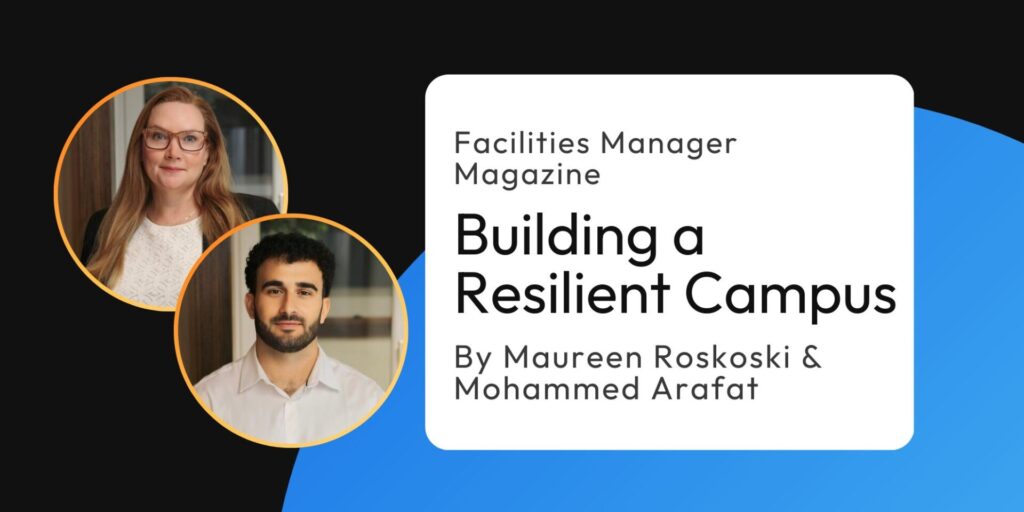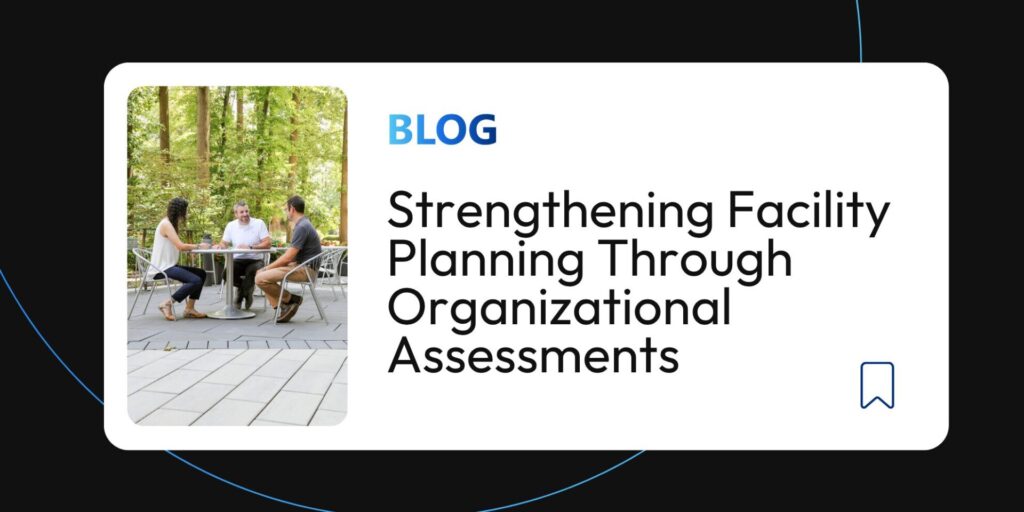Facilities Manager Magazine Article on Campus Emergency Preparedness Strategies
As the risks facing educational institutions grow more severe and complex – from climate-related disasters to digital threats – campus resilience planning is no longer a nice-to-have. It’s a necessity. In their compelling article for APPA‘s Facilities Manager magazine, FEA’s Maureen Roskoski and Mohammed Arafat explore what it really takes to build a resilient campus and share campus emergency preparedness strategies – and why traditional emergency plans just aren’t enough.
The Cost of Delay: A Stark Warning from California and Maui
Using the devastating wildfires in California and Maui as real-world case studies, the authors make one thing clear: disruptions aren’t a matter of if, but when. From the 2017 Sonoma Wildfires to the deadly 2023 fires in Lahaina, these events exposed painful truths that emergency systems can fail, backup plans can fall short, and the consequences can be catastrophic.
FEA’s own offices were directly impacted during the California fires, and our continuity was preserved only because of a robust, tested, and adaptable emergency management system. The lesson? Planning needs to go deeper than a binder that collects dust on a shelf.
Emergency Plans: Static vs. Strategic
Many institutions operate with outdated, compliance-driven emergency plans—documents created to check a box rather than respond to real-world dynamics. Maureen and Mohammed argue that these plans must evolve. A truly resilient campus is built on a living framework that accounts for current threats, real-time decision-making, and cross-functional coordination.
Effective campus emergency preparedness strategies begin with a plan that includes:
-
A detailed risk assessment tailored to the institution’s unique vulnerabilities
-
Clear communication protocols and evacuation procedures
-
Defined roles and responsibilities across departments
-
Regular training, drills, and scenario testing
Beyond Survival: The Role of Business Continuity Planning
Emergency response is just one piece of the puzzle. What happens after the immediate danger has passed is just as critical. Business continuity planning ensures that essential services, including academic, administrative, and operational, can continue or resume quickly.
The article outlines key components of a strong continuity plan, including:
-
Business impact analysis to prioritize essential functions
-
Staff training and succession planning
-
Data backup and cybersecurity protections
-
Alternative facilities and operations protocols
-
Regular reviews and updates to keep plans relevant
The authors make the case that campuses must be ready to pivot—because one backup location or system isn’t enough. Redundancy, flexibility, and clarity are essential.
Facing Tomorrow’s Threats
As wildfires, floods, cyberattacks, and infrastructure failures become more frequent and destructive, campus leaders must take a proactive, all-hazards approach. The article underscores the importance of building resilience into every layer of operations – from climate-adaptive infrastructure to modernized IT systems.
Resilience isn’t just about surviving a crisis – it’s about maintaining mission-critical operations and protecting the people, property, and purpose that define your institution.
A Personal Wake-Up Call
Maureen shares a powerful personal account of being in Lahaina during the deadly 2023 wildfires. The experience highlighted a critical truth: in a crisis, communication systems can break down, preparation becomes the only certainty, and campus emergency preparedness strategies are critical.
With a go-bag, satellite GPS, and prior knowledge of emergency response planning, she was able to remain safe despite power outages, lack of cell service, and mass evacuations. This real-world test of planning reinforces the article’s central message: we must be ready, not reactive.
Final Thought: Are You Prepared?
The next disaster won’t wait for your campus to be ready. A resilient institution is one that invests in the future today—through strategic emergency planning, tested business continuity measures, and a culture of preparedness.
Is your institution ready to face the unexpected?
📰 Read the full article in Facilities Manager magazine to explore these strategies in depth.



